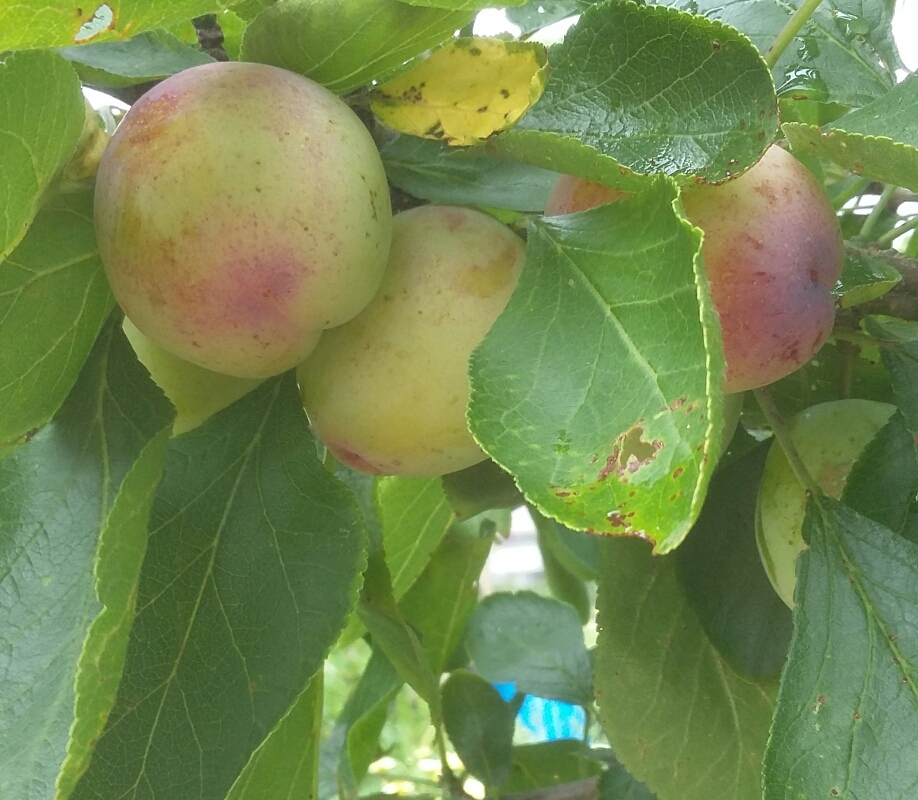As mentioned in a blog post last week, I’m planning on giving up the allotment I’ve held from the past decade and a half as I simply don’t give it the time it deserves due to work, hobbies and other factors.
There are a good number of trees on the allotment that were planted in my first few years there and I feel that I owe them some loyalty for all the fruit and whittling wood they’ve provided over the years.
Although I plan to leave the allotment well mulched and relatively weed free, so the next user can get a head start, the chances are that a few of these more established trees will remain behind as I won’t be abe to rehome them all. Those that do will be heavily pruned before I leave them to their fate.
Yet, sadly the chances are also that the council will spray the plot with herbicides; potentially killing anything of value left. This annoys me simply because that patch of land has been cultivated to organic standards all the time I’ve tended to it (and hopefully will be tended in that manner after I leave).
So, what to do? How do I repay those trees?
I was starting to plan a layering system to root sections of the trees so I could replant elsewhere, safe in the knowledge that the genetic traits of those trees would be continued in new plants elsewhere.
Layering consists of lightly damaging a branch which is then pinned to the soil so that, as it heals, roots grow from the damaged part. This rooted branch can then be removed and a new, genetically identical plant is formed.
…But layering can take a long time for some species (like most fruit trees).
Then, a few days ago, I stumbled on a Pintrest link that took me here
This is a blog post about a way of propagating trees that I was unfamiliar with.
Having worked as a plantsman and Nurseryman for a good few years (albeit around six years ago) propagation is a one of my addictions. An addiction which rarely needs justification apart from when too much space starts to be taken up by all the extra plants!
As such I’m feeding my addiction!
The linked post is a simple version and with a little horticultural knowledge I think it can be improved to make better use of the hormones present in dormant buds.
With two water bottles that I knew could be used immediately I started to get a little excited.
Their labels were removed and enough water was poured in to fill the bottom two inches of the bottles.
Having had a great plum harvest this year I decided to honour the tree by trying this ‘super giant plum’ (or similar name when bought) and I took a thin branch from a purple leaved (young foliage), tiny berried, ornamental apple which bears beautiful dark pink/purple flowers in spring.
As the original article suggested o cut off all buds and leaves and discarded them (compost heap).
The branches are between 5mm and 15mm in diameter and we’re cut in to five inch lengths (approx 13cm). The original article suggests eight inch, but my bottles are smaller so I had to adapt.
I cut just above a bud for the top most part of the branch section and just below a bud for the bottom end. Trimming like this reduces the amount of wood that could die back and encourages the buds to produce roots quicker as they end up with more of a hormone concentration where the totipotent cells are in high density.
Each bud, or leaf scar, contains an axillary bud which is usually dormant or suppressed by more dominat shoots. It’s from these that new roots and shoots should come.
These snipped branches were placed in the bottles and the lids screwed on, ensuring 100% humidity. Just like a mist propagator really.
Apparently they should show signs of root growth, in the form of white root nubs, in around two weeks. I’ll keep you informed for good or ill. Once the roots start to form they should be potted up and grown on as normal.
Most fruit trees are grafted on to dwarfing rootstock to keep them small and manageable. If this works, fingers crossed, the chances are that the resultant trees will be more vigorous than their parents and much taller.
RESULTS: Sadly this process doesn’t work too easily…. the stems in water tend to ferment rather than root. .. which is a pity as I had high hopes.







